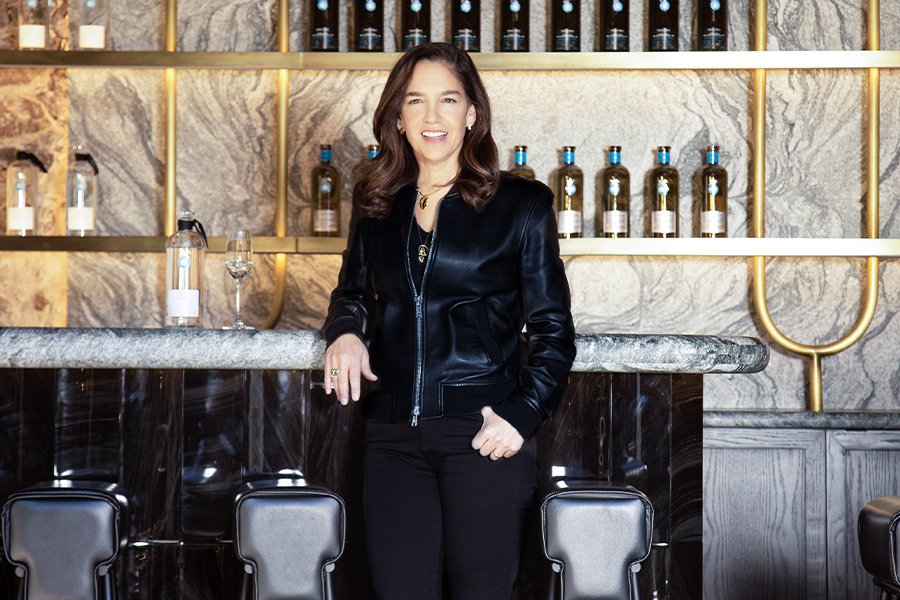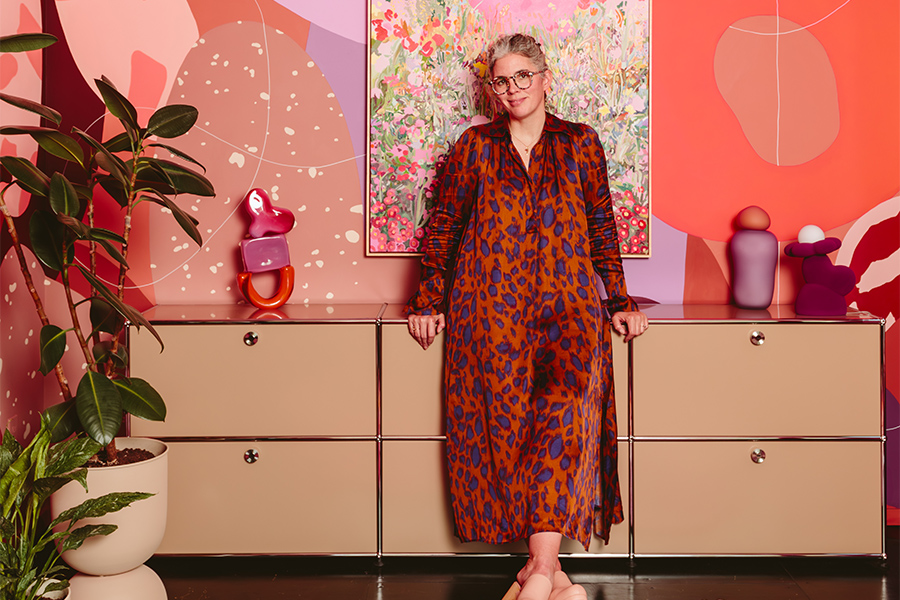Dr. Upali Nanda has spent more than a decade shaping HKS’ approach to the human experience. Originally from New Delhi, India, the Ann Arbor, Michigan-based Nanda was drawn to architecture’s blend of art, science, and storytelling.
After earning her bachelor’s of architecture in India, a master’s in Singapore, and a Ph.D. in the U.S., she transitioned from academia to one of the earliest roles for a researcher in practice, eventually joining HKS as director of research before becoming global sector director for innovation.
Today, she leads a multidisciplinary team that bridges neuroscience, sustainability, and community planning. Among the work she champions is BBBL3 (pronounced Bubble), a 2024 Radical Innovation Competition winner that reimagines hospitality through immersive, AI-driven, multisensory design.
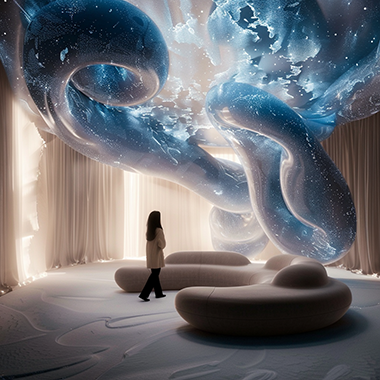
The walls of the BBBL3 are composed of LED screen panels that can display different scenes tailored to each guest’s preferences
Here, she discusses how designing with intention creates spaces that improve lives.
When did you know you wanted to be an architect?
Upali Nanda: I didn’t have [architecture] on my radar. I grew up as a dancer in a very artistic family. My father was an engineer, so I went through my life balancing arts and science. How you get into professions in India is by taking an exam, and architecture was the only profession that required sketching, poetry, writing, science, and math. I couldn’t understate the world that had opened up to me. I didn’t know [architecture] would resonate with me so much.
My master’s was on music, art, and architecture. I was comparing the visual rhythms of temple architecture with rhythms in dance and music. Building proportions are similar. That got me interested in the way in which the human mind is constructed and how it seeks patterns in the world. It started a love affair with human perception, neuroscience, and psychology.
How do you distill those ideas down to the built environment?
UN: The two absolute truths in our lives are that our brains live in our bodies, and our bodies live in our environments. Our environments are shaped by the built environment. The places we live shape society in profound ways. We’re human, so we think we must understand humans. It’s easy to take that for granted. That’s the touchy-feely part. We spend time on the engineering components of it, but it’s taken us this long to say that the softer feelings have hard science backing to it. The dichotomy between creative processes and scientific inquiry is a false one in our field. They are completely codependent on each other, and that’s been our model. My work is at the intersection of the built environment with the sensory, cognitive, and emotional. My focus on linking design to outcomes and improving health—by design—is based on the scaffolding of how humans and environments interact.
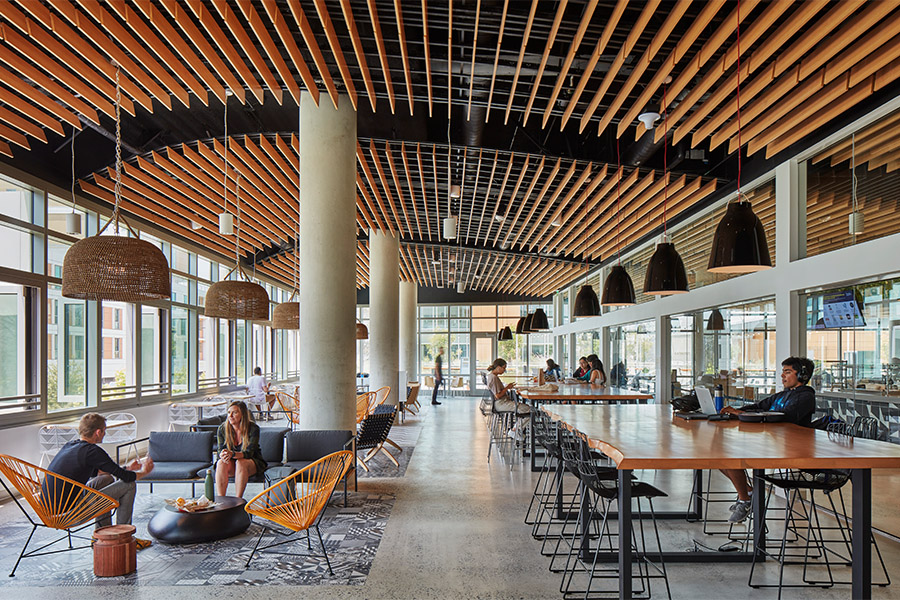
The UC San Diego North Torrey Pines Living and Learning Neighborhood embodies sustainable, human-centered design
Describe your research process.
UN: Our model is constantly evolving. I’m sensitive to research becoming a tool for prescriptive design. We never want that to happen. Design will always be a creative endeavor. Research is the clay, but the designer’s mind is the sculptor. You have to sculpt it to make something new. When you make something new and you measure the impact of it, you will have new ingredients for the clay for your next project. I want us to reward projects not based on how they look or how amazing a rendering is, but the joy they create in someone’s life.
What is your role once a project is finished?
UN: The end of someone’s project is the beginning of ours. Our innovation team [consists of] strategists, analysts, economists, psychologists, anthropologists, sustainability professionals, materials scientists, community engagement professionals, planners, designers, and engineers. [We all work together] with the goal of unleashing the power of the built environment and the power of place. For us, we have to design the experience before we design the building.
Is there a project where your research led to an unexpected design outcome?
UN: One big project is the UC San Diego North Torrey Pines Living and Learning Neighborhood. Students from the university became our researchers. They stayed on campus and researched the project for more than a year. What we found is after moving into this new neighborhood, there was an 8.5 percent reduction in student reported depression. It also exceeded sustainability goals. But the human health stats about a reduction in depression, at a time when one in four students reported an anxiety disorder on campus, was incredible for us.
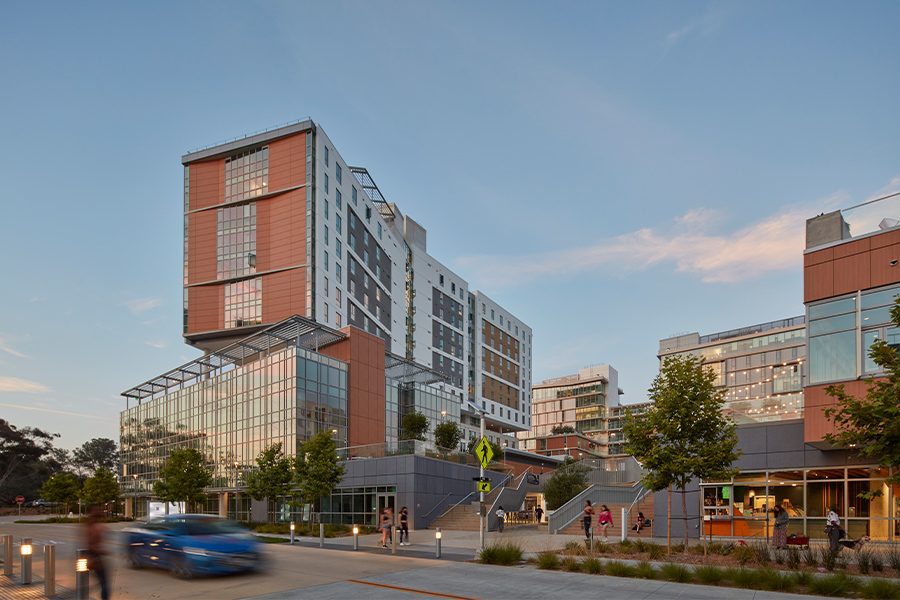
The East Quad is framed by Catalyst Residence Hall at the UC San Diego Living and Learning Neighborhood
Tell us more about Project WHY.
UN: This project is about unlocking the relationship between buildings and brains and understanding why spaces make us feel the way they do. It’s going to be crowdsourced and followed by a controlled experiment and an interactive exhibit because we want that awareness to be in the public. The focus is on how we experience awe, feel belonging and connection, and spur creativity and cognitive performance through the built environment. For us, it’s an exciting time.
What goes into creating emotionally resonant buildings?
UN: First of all, the science is more evolved. The research exists, the tools to measure biofeedback exist. It’s not true anymore that we don’t know what’s going to happen until it’s built. It’s not a black box. We can simulate it. We can do emotional prototypes; we can do experiential prototypes for some of our clients. Emotions can be measured, and they can be directly impacted by design, which can be the tool where we can neurobiologically make someone feel better.
Do you have a fear of new technologies like AI?
UN: Not at all. Our generation has seen two big revolutions. We saw the internet revolution, and now we are seeing the AI revolution. These are two big shifts that have made us agile thinkers. There are two camps in AI. One is that AI could help us. It will dethrone the egocentric view that humans tend to take and that may make us more focused on humanity in general. There’s the other camp that talks about how it might be eroding our brain, which is something for us to be aware of. We had already determined that one way we maintain our relevance in design is through the ABCs. A focus on AI and automation, a focus on climate and carbon, and in the middle, the focus on the human brain.
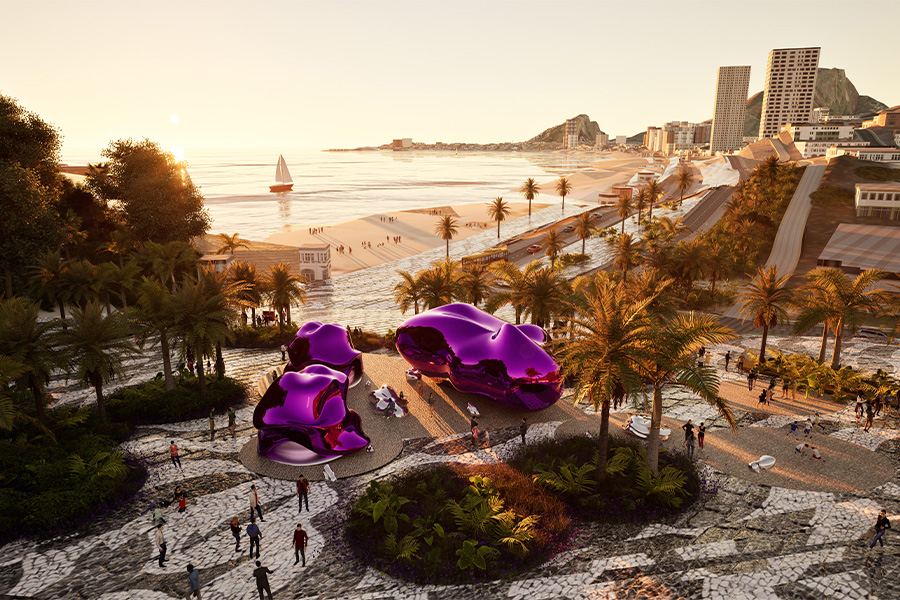
The BBBL3 (pronounced Bubble) was conceived with HKS and Roam as a multisensory space for global cities using AI and smart technology, shown in a rendering
How can we move beyond the humans versus technology mindset?
UN: What’s happening right now is we need to double down on meaningful engagement with technology. We have to get out of the versus narrative. We need to think about what it is that we want. We need to feel good. We need to be good. We need to do good. To do that, we need to understand our collective selves more deeply than we ever have. We double down on human perception because how else do we pave the path to designing for humanity?
What is the biggest opportunity you see for the built environment in the next five to 10 years?
UN: The built environment’s biggest opportunity is negotiating a human relationship with nature and technology. What it means in our day-to-day work is making sure we are aware of human perception, brain health, and brain capital. Paying attention to that makes economic and ethical sense. It’s how we double down on this idea of margin and mission together. You can’t think about margin at the cost of mission [and vice versa]. You have to bring those two together. Our mandate is to create better futures, and we do that through the built environment. Good design can induce intended emotions. That’s very powerful, and that’s where we are going next.
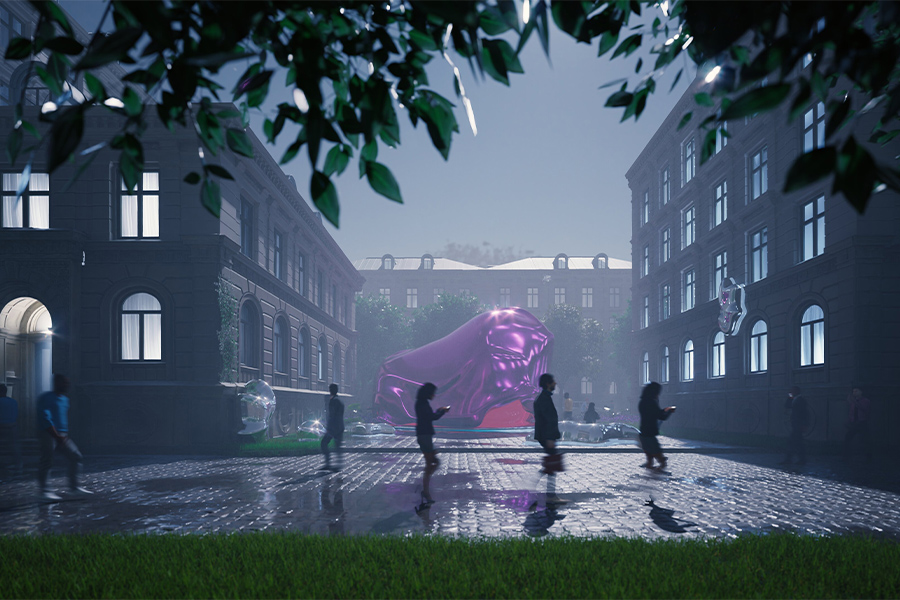
A rendering of BBBL3, which is inspired by droplets
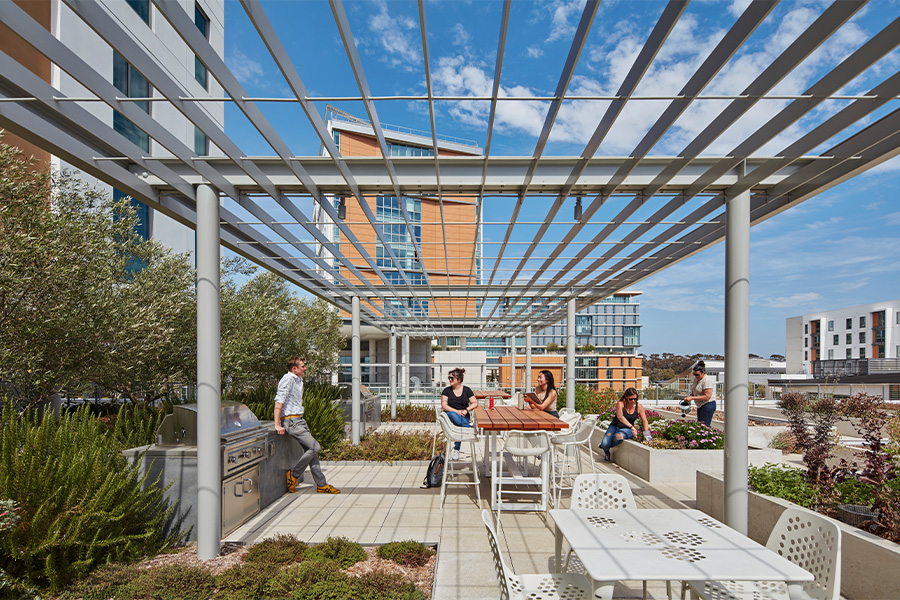
Outdoor terraces at the UC San Diego Living and Learning Neighborhood offer scenic views
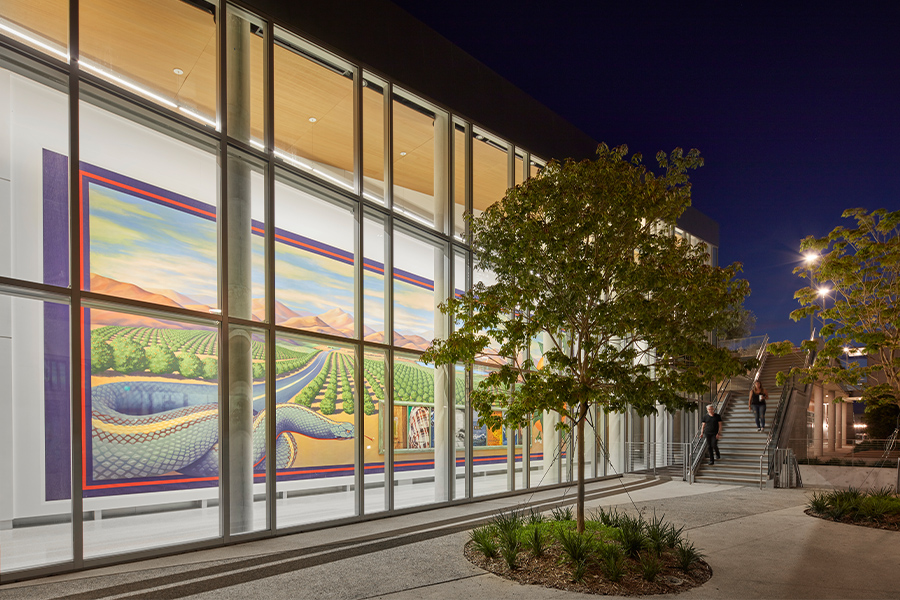
A large-scale mural anchors a building at the UC San Diego Living and Learning Neighborhood
This article originally appeared in HD’s September 2025 issue.

